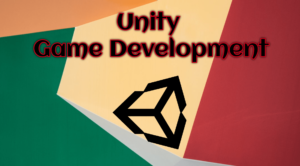In this blog post, we will provide an in-depth introduction to the Unity Editor and Interface, covering all the essential aspects of using the software. We’ll start by discussing the basics of the Unity Editor and then move on to more advanced topics.
Unity is a popular game engine that has been used to develop games for various platforms, including PC, consoles, mobile devices, and even virtual reality headsets. Its intuitive interface and powerful tools make it an ideal choice for both beginners and experienced developers.
Contents
What is Unity Editor?
Unity Editor is a software that allows developers to create, edit, and test their games. It provides a range of tools and features that enable developers to design 2D or 3D games, build interactive environments, and even create virtual reality experiences. The Unity Editor is available for Windows, Mac, and Linux.
Unity Interface
The Unity interface consists of several panels that provide access to various tools and features. Let’s take a look at some of the essential panels:
- Hierarchy Panel: The Hierarchy Panel is where you can view all the game objects in your scene. Game objects are the building blocks of your game, and you can use this panel to create, delete, or modify them.
- Scene Panel: The Scene Panel is where you can view and manipulate your game environment. You can move, rotate, and scale game objects in this panel.
- Inspector Panel: The Inspector Panel displays information about the selected game object. You can use this panel to modify the properties of a game object, such as its position, rotation, and scale.
- Project Panel: The Project Panel is where you can manage your project assets, such as textures, materials, and scripts. You can import new assets into your project, create new folders, and delete unused assets.
- Console Panel: The Console Panel is where you can view error messages and other useful information about your game.
Tips for Navigating the Unity Interface
- Use the keyboard shortcuts to navigate through the Unity interface quickly.
- Customize your layout by rearranging the panels to suit your workflow.
- Use the search bar to quickly find specific assets or game objects.
- Use the gizmos in the Scene Panel to manipulate game objects easily.
FAQs
Q: Can I use Unity to create 2D games?
A: Yes, Unity provides several tools and features for creating 2D games.
Q: Do I need programming experience to use Unity?
A: While programming knowledge is helpful, Unity provides visual scripting tools that allow users to create games without writing code.
Q: Can I use Unity to create virtual reality experiences?
A: Yes, Unity provides built-in tools for creating VR experiences, making it an ideal choice for VR development.
Conclusion
In conclusion, the Unity Editor and Interface are powerful tools that allow developers to create, edit, and test their games. Understanding the essential panels of the Unity interface is crucial to navigate through the software easily. Whether you’re a beginner or an experienced developer, Unity has the tools and features to help you create your dream game.
You may like:
Unity Editor and Interface, Unity Editor and Interface, Unity Editor and Interface, Unity Editor and Interface, Unity Editor and Interface
Introduction to Unity – A Beginner’s Guide to Unity Game Development


Pingback: A Beginner's Guide to Creating and Saving Unity Projects and Importing Assets - Developers Dome